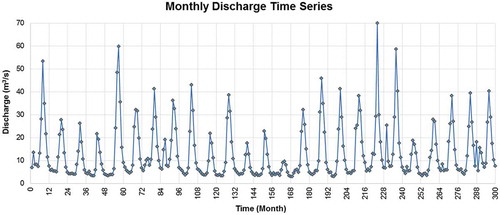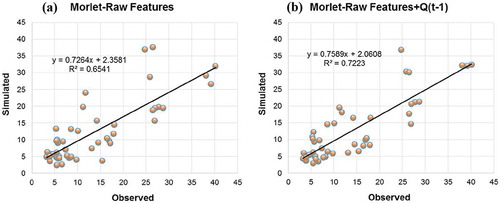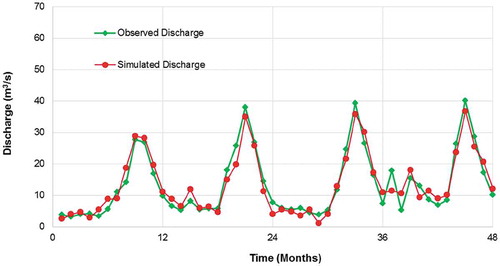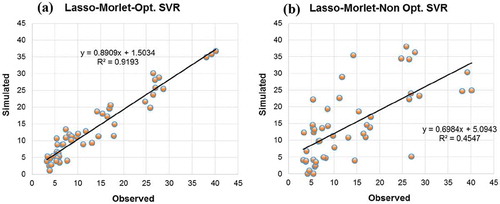Figures & data
Table 1. Statistical characteristics of the input and output data.
Table 2. Original and generated features in the study area. See for abbreviations of stations.
Table 3. Values of the parameters used for the PSO algorithm.
Table 4. Selected features by feature selection method.
Table 5. Values of the parameters used for the GOA.
Table 6. Statistical performance evaluation of the applied models in the testing phase. R2: determination coefficient; MAE: mean absolute error; RMSE: root mean squared error; NS: Nash-Sutcliffe efficiency criterion.
Table 7. Number of support vectors and optimal parameters obtained for SVR.
Figure 4. Observed vs simulated streamflow (m3 s−1) using various models on the test data: (a) LASSO and Morlet wavelet, (b) LASSO and Mexican hat wavelet, (c) PSO-ANN and Morlet wavelet and (d) PSO-ANN and Mexican hat wavelet.







